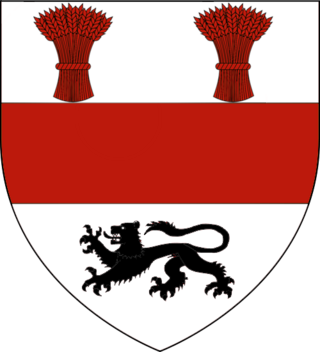See also
Surname list
This page lists people with the surname Cosgrave. If an internal link intending to refer to a specific person led you to this page, you may wish to change that link by adding the person's given name(s) to the link.
Cosgrave is an Irish surname. Notable people with the surname include:

William Thomas Cosgrave was an Irish Fine Gael politician who served as the president of the Executive Council of the Irish Free State from 1922 to 1932, leader of the Opposition in both the Free State and Ireland from 1932 to 1944, leader of Fine Gael from 1934 to 1944, founder and leader of Fine Gael's predecessor, Cumann na nGaedheal, from 1923 to 1933, chairman of the Provisional Government from August 1922 to December 1922, the president of Dáil Éireann from September 1922 to December 1922, the minister for Finance from 1922 to 1923 and minister for Local Government from 1919 to 1922. He served as a Teachta Dála (TD) from 1921 to 1944. He was a member of parliament (MP) for the Kilkenny North constituency from 1918 to 1922.

Kinsella is a surname of Irish Gaelic origin, developed from the original form Cinnsealach, meaning "proud". The Kinsella sept is native in part of the modern County Wexford in Leinster, a district formerly called the Kinsellaghs. The oldest documentary mention of the surname appears in the Ancient Records of Leinster, dated to 1170, where the son of the King of Leinster is named as Enna Cinsealach. Originally pronounced KIN-səl-ə, it is also often found pronounced kihn-SEL-lə. This surname is most often found in Ireland, Northern Europe, Australia and New Zealand.
Naughton is an Irish Gaelic surname derived from the name Ó Neachtain meaning 'descendant of Nechtan'. A Sept of the Dal gCais of the same stock as Quinn and Hartigan where located in Inchiquin Barony, County Clare.
Pearse is a surname. Notable people with the name include:
Aiken is a Scots-Irish surname, used as a variant to the original Scottish name Aitken. Notable people with it include:
Hogan is an Irish surname, mostly from County Tipperary. It is the anglicised form of Gaelic ÓhÓgáin ‘descendant of Ógán', a name meaning 'young warrior'. It may also be an anglicised form of Ó hEochagáin (Houghegan). Notable people with the surname include:
Pilkington is an English surname. Notable people with the surname include:
Pattison is a surname that comes from North East England and Scotland, and may refer to
Flood is a traditional Irish and Scottish surname and may refer to:
Howlett is a surname. Howlett was a baptismal name which means, literally, "the son of Hugh". As the naming tradition grew in Europe, baptismal names began to be introduced in many countries. Baptismal names were sometimes given in honour of Christian saints and other biblical figures. Notable people with the surname include:
Ennis is a surname. Notable people with the surname include:
Aylward is a name that may refer to:
Horne is a surname. Notable people with the surname include:
Abernethy is a surname whose origins link to a Scottish clan that descends from Orm de Abernethy, a grandson of Gille Míchéil, Earl of Fife that presumably settled at Abernethy, Perth and Kinross.
Bryce is a surname of Celtic origin which may denote membership of Sept Bryce, a sept of Clan MacFarlane. Bryce may also refer to:
Andrew is sometimes used as a surname. It is derived from the given name Andrew.
Cullen is an Irish surname. It is an Anglicised form of Gaelic Ó Cuileáin 'descendant of Cuileán', a name meaning 'wolfhound whelp', 'young hound'. It is also considered by some to mean the 'handsome one'. The Uí Cuileáin of County Tyrone were erenaghs of Clogher. According to historian C. Thomas Cairney, the O'Cullanes were one of the chiefly families of the Uí Fidgenti who were a tribe of the Erainn who were the second wave of Celts to settle in Ireland between about 500 and 100 BC.
Davey is a surname. Notable people with the surname include:
Killeen is a surname of Irish origin. Notable people with the surname include:
Quinn is an Anglicised form of the Irish Ó Coinn or Mac Cuinn. The latter surname means "descendant of Conn". The surname Quinn is also rendered Ó Cuinn or Mac Cuinn in Irish. The surname is borne by several unrelated families in Ireland, especially in the northern province of Ulster and also the counties of Clare, Longford, and Mayo. According to the historian C. Thomas Cairney, the O'Quins were part of the Conmaicne Rein tribe in Ireland who came from the Erainn tribe who were the second wave of Celts to settle in Ireland from about 500 and 100 BC. The most notable family of the name are that of Thomond, a Dalcassian sept, who derive their surname from Niall Ó Cuinn who was slain at the Battle of Clontarf in 1014. This family was formerly represented by the Earls of Dunraven. Another family is that seated in Annaly, who were related to the O'Farrell lords of Longford. Another Quinn family was seated at An Chraobh, County Tyrone and they were related to the O'Neill Kings of Tír Eoghain and for whom they acted as Hereditary Quartermasters. Other families include one seated in Antrim; one seated in Raphoe; and one called Clann Cuain, seated near Castlebar. In the seventeenth century, the surname Quinn was common in Waterford. In 1890, the surname was numerous in Dublin, Tyrone, Antrim, and Roscommon. Quinn is one of the twenty most common surnames in Ireland. the surname Quinn is sometimes associated with Catholics, while Quin is associated with Protestants.